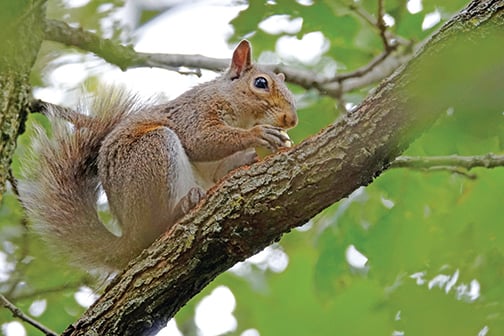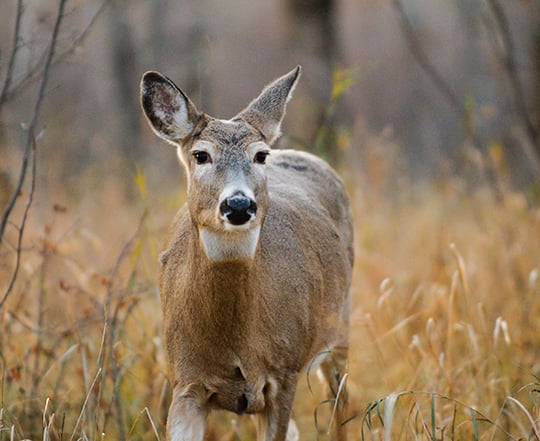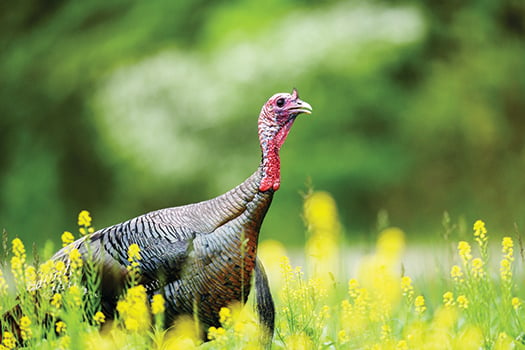Red oak acorns have been plentiful this fall in Ohio – Outdoor News

Columbus — The Ohio DNR (ODNR) Division of Wildlife reports acorn production is running strong for red oak trees, according to the 2024 acorn mast survey. The survey is a useful report for hunters, which many may use to help guide them when it comes to finding wildlife during hunting seasons.
The survey found an average of 68% of red oaks and 34% of white oaks bore fruit on 31 Ohio wildlife areas.
Each summer, Division of Wildlife employees scan the canopies of oaks at select wildlife areas to determine the percentage of trees that produced acorns, as well as the relative size of the acorn crop. This is the 20th year the Division of Wildlife has completed the mast survey. This year, the proportion of red oaks statewide bearing acorns (68%) was well above last year (54%), while the percentage of white oaks statewide with acorns (36%) was slightly below last year (40%). The long-term average for red oak production is 55%, and 36% for white oaks.
Acorn abundances vary by region. All results, including tables and historical numbers, are available at wildohio.gov.
MORE COVERAGE FROM OHIO OUTDOOR NEWS:
Ohio Insider: Good news on the turkey front
Lake Erie’s walleye hatch again a solid one in Ohio waters
Ohio man pleads guilty to poaching world-class typical whitetail
Red oaks in 2024 had an average abundance of 24% of the tree’s crown holding acorns, up from 16% last year and besting the long-term average of 19%. White oaks averaged 5% acorn crown coverage, below last year’s result (9%) and the long-term average (9%). With red oaks faring well by the presence and relative abundance metrics, hunters can expect to find more red oak acorns in the woods than last year, and fewer white oak acorns.
Acorns come in two basic types: red and white, coming from the red and white oak tree groups. Red oak acorns take two years to develop, and the acorns are bitter, containing a large amount of the chemical tannin. White oak acorns take only one year to develop and have a sweeter taste for wildlife. White oak trees have leaves with rounded lobes and tend to drop their acorns in late summer and early fall. Red oak trees have leaves with bristled lobes and often drop their acorns later than white oaks, even into winter. These differences cause periodic fluctuations in statewide acorn abundance. Low mast production years are a normal part of this cycle, and wildlife readily adapt to find alternative food sources.
A single oak tree can produce thousands of acorns, feeding a diversity of wildlife such as white-tailed deer, wild turkeys, blue jays, ruffed grouse, squirrels, raccoons, woodpeckers, and foxes. Wildlife seeks out and eats acorns throughout the fall and winter.
As a critical food source for many forest wildlife species, acorn abundance has been linked to body condition, winter survival, and reproductive success. A year with low acorn abundance causes deer and other wildlife to move around more in search of food. In areas with poor acorn production, wild animals are more likely to feed near agricultural areas and forest edges.
Deer hunters can use acorn survey information to improve hunting success. In areas where acorns are an important part of the white-tailed deer’s diet, mast availability and distribution can affect deer movements and – ultimately – hunter success. During poor mast years, deer and other wildlife species are forced to use other food sources, and travel distances between feeding and bedding areas may be longer. Hunters may key in on travel corridors and alternate food sources. In regions with a strong acorn crop this fall, hunters may find success while hunting in or near oak stands. Red oak stands may be of interest to deer hunters this fall, especially later in the year.
Oak trees have value beyond food and shelter for wildlife. Collect mature acorns in the fall and place them in a bucket of water. Keep the ones that sink and discard any that float, as those won’t germinate. Store the remaining acorns in the refrigerator or outside for at least eight weeks in the winter months. Plant the acorns under a shallow covering of soil during the early spring, water regularly, and enjoy seeing your new oak trees grow from those acorns.
Source: https://www.outdoornews.com/2024/10/18/red-oak-acorns-have-been-plentiful-this-fall-in-ohio/






